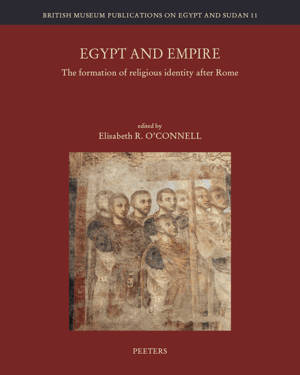
- Afhalen na 1 uur in een winkel met voorraad
- Gratis thuislevering in België vanaf € 30
- Ruim aanbod met 7 miljoen producten
- Afhalen na 1 uur in een winkel met voorraad
- Gratis thuislevering in België vanaf € 30
- Ruim aanbod met 7 miljoen producten
Zoeken
€ 293,45
+ 586 punten
Omschrijving
Across Eurasia and North Africa in the First Millennium AD, empires rose and fell, each adopting a universalizing faith which distinguished it broadly from its neighbours. In Egypt, our sources are particularly rich, owing to the land's arid climate and the unparalleled survival not only of stone, ceramic and metalwork, but also of organic material such as textiles, wood and manuscripts found on papyrus, parchment and paper. This volume brings together over a dozen of the world's leading specialists to explore the dialectical interplay between empire and religious identity through a series of case studies from Egypt. Evidence from Egypt suggests that it was precisely in the context of empire that 'religious identity' emerged as a distinctive marker. Using the unrivalled abundance and variety of surviving material culture, this volume explores the formation, renegotiation and reconstitution of religious identities from the Roman period forward. Whereas Egypt's 'pharaonic' millennia (c. 3000-30 BC) have been studied as a coherent whole, later eras are often studied as fragments. Egypt and Empire offers a different approach by covering together periods that are usually treated separately in different academic disciplines.
Specificaties
Betrokkenen
- Auteur(s):
- Uitgeverij:
Inhoud
- Aantal bladzijden:
- 380
- Taal:
- Engels
- Reeks:
- Reeksnummer:
- nr. 11
Eigenschappen
- Productcode (EAN):
- 9789042940314
- Verschijningsdatum:
- 19/04/2022
- Uitvoering:
- Hardcover
- Formaat:
- Genaaid
- Afmetingen:
- 245 mm x 300 mm
- Gewicht:
- 4939 g

Alleen bij Standaard Boekhandel
+ 586 punten op je klantenkaart van Standaard Boekhandel
Beoordelingen
We publiceren alleen reviews die voldoen aan de voorwaarden voor reviews. Bekijk onze voorwaarden voor reviews.







